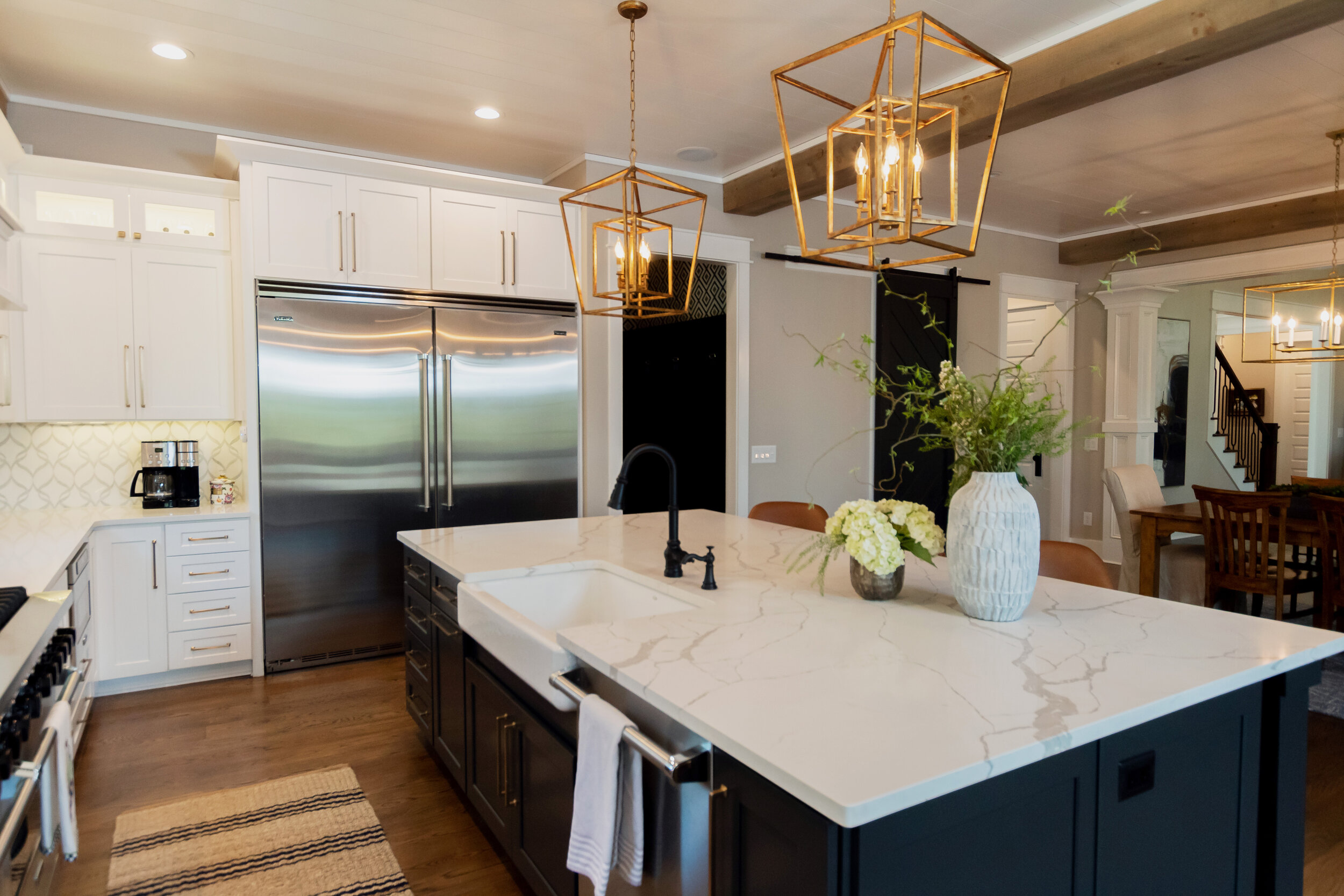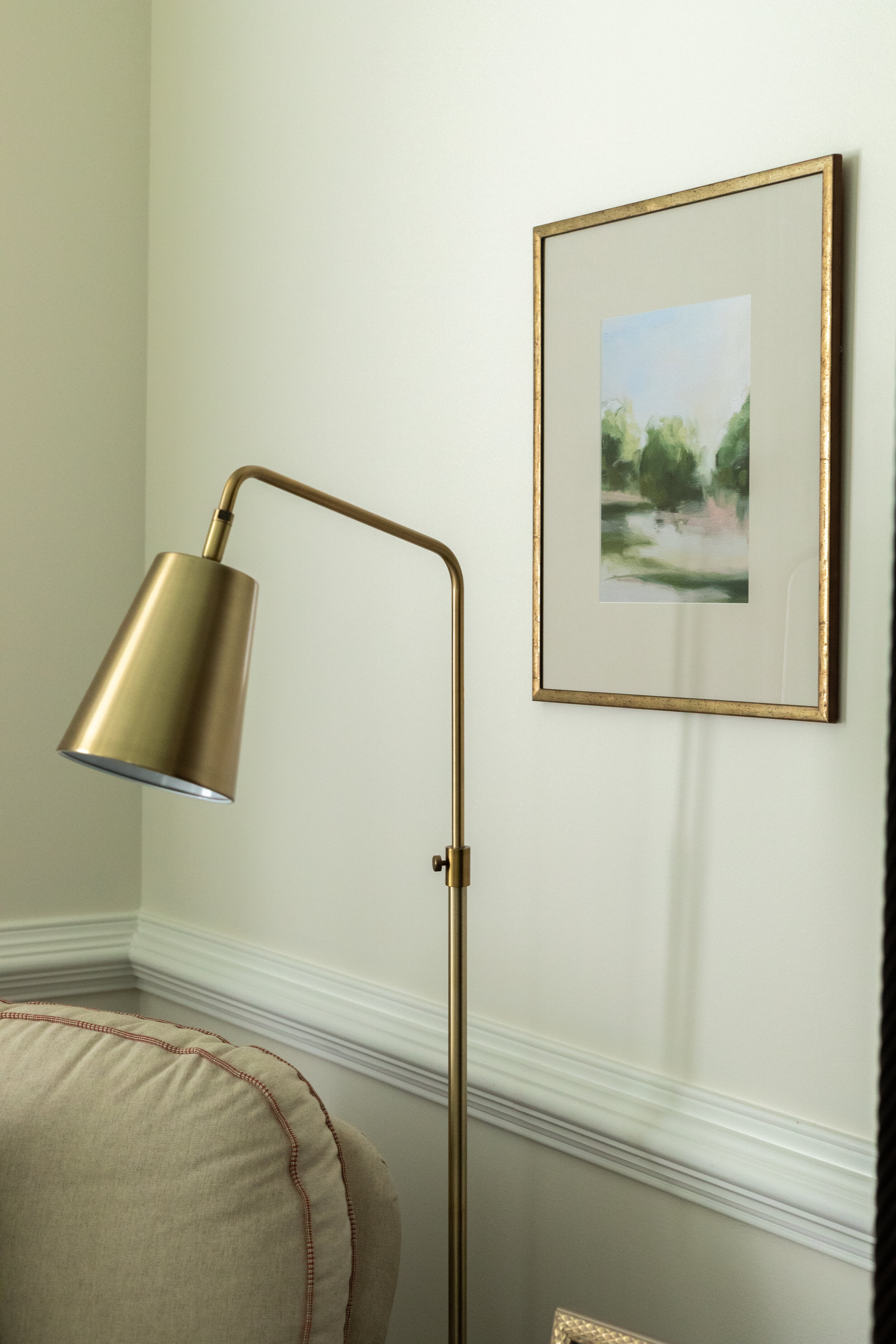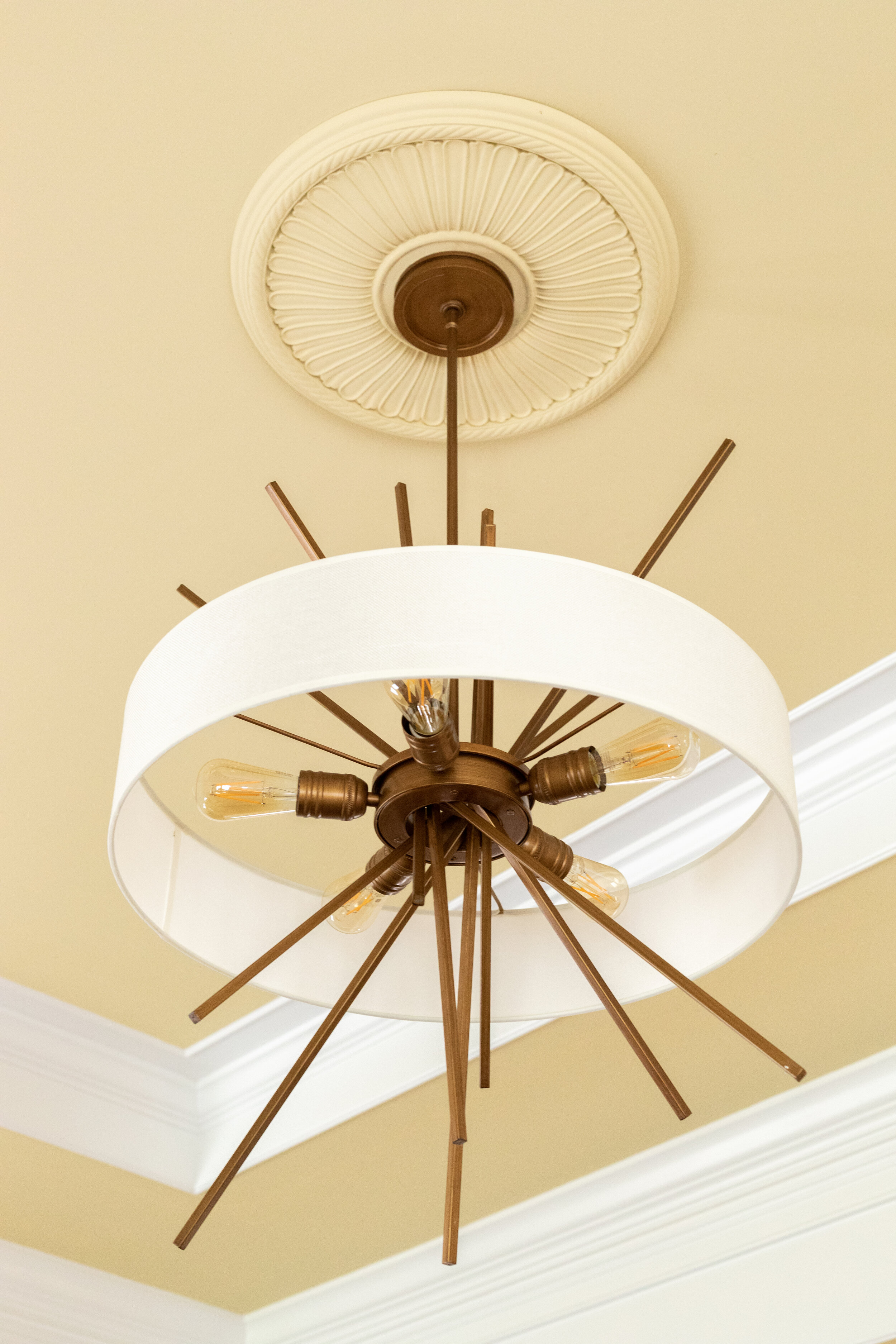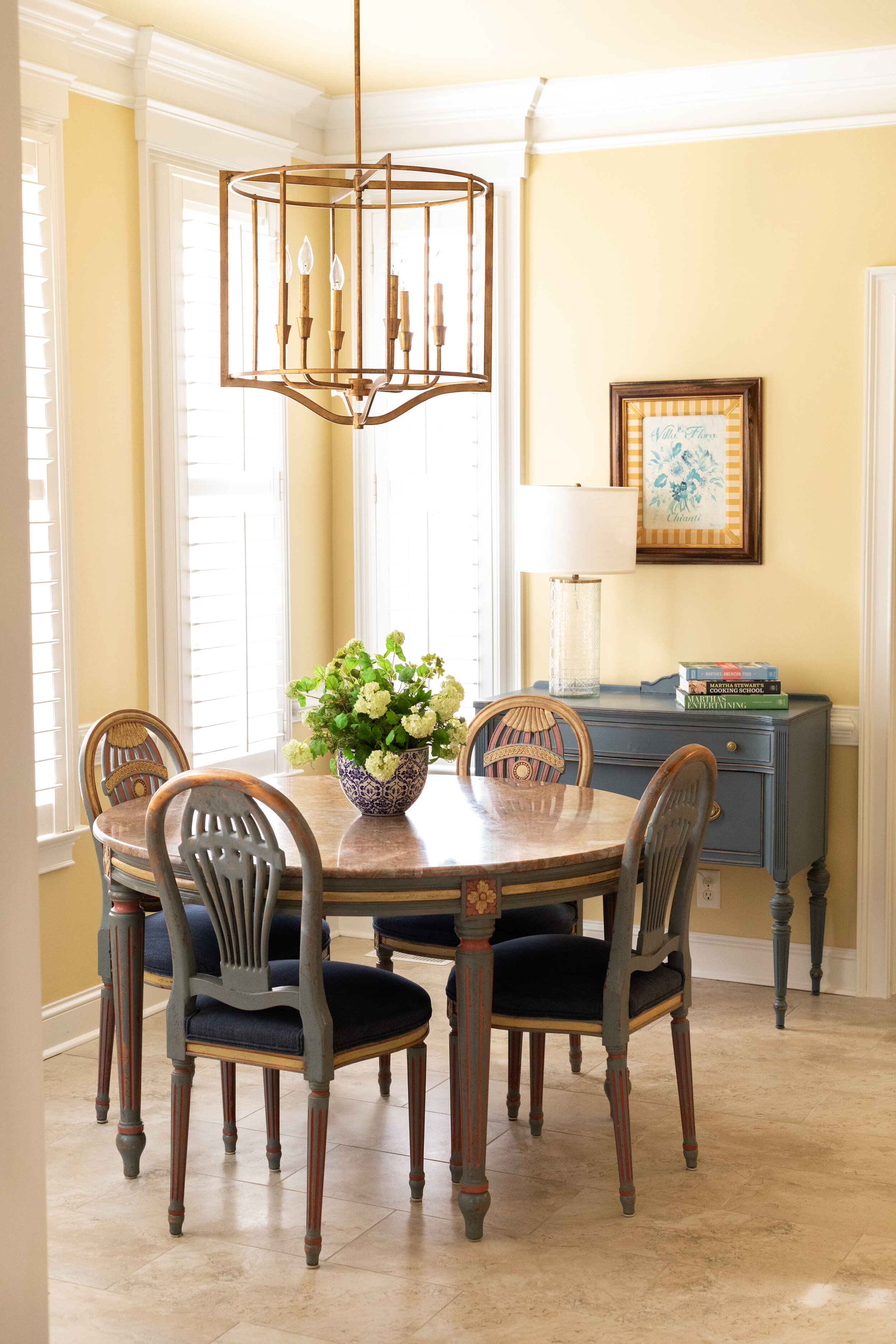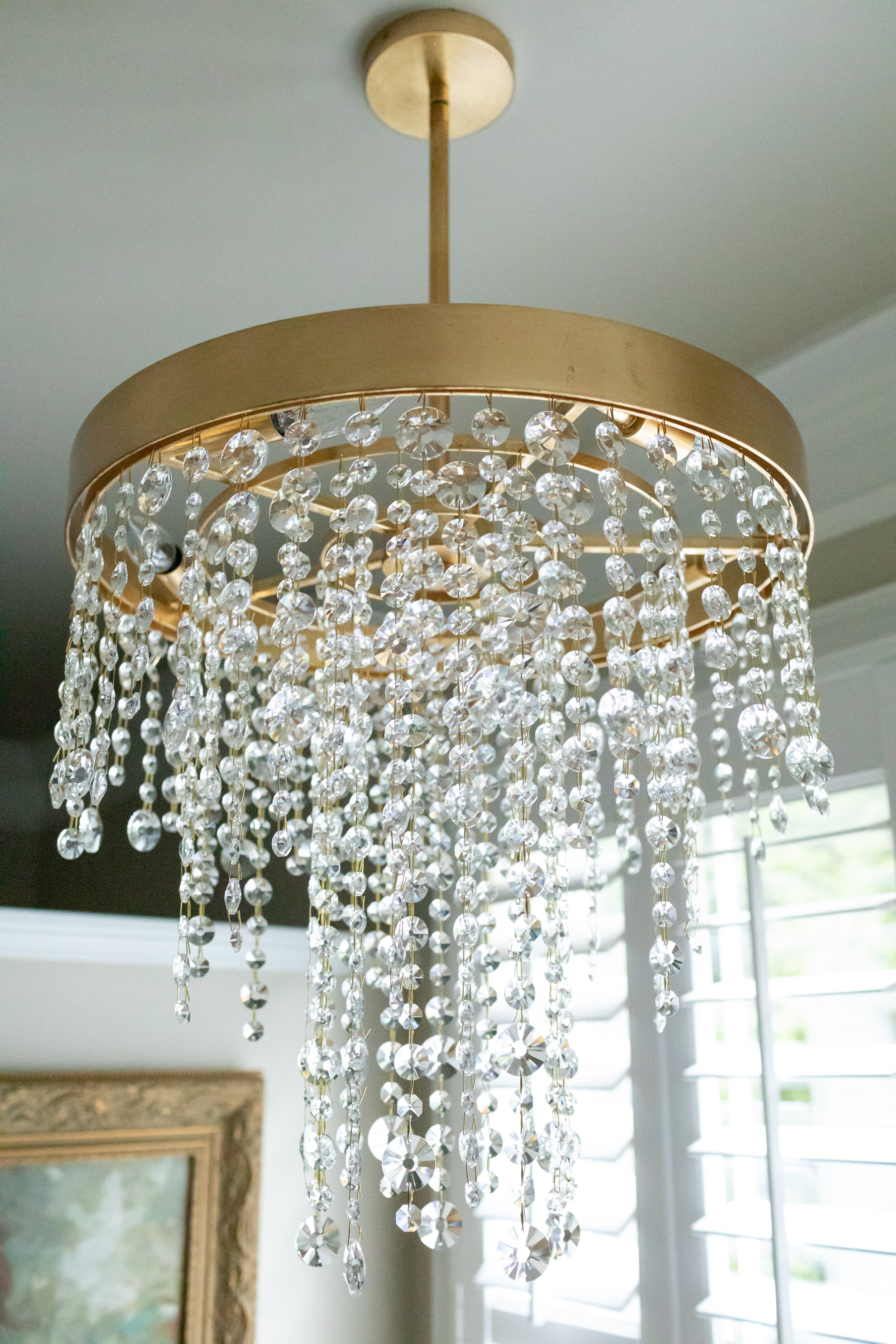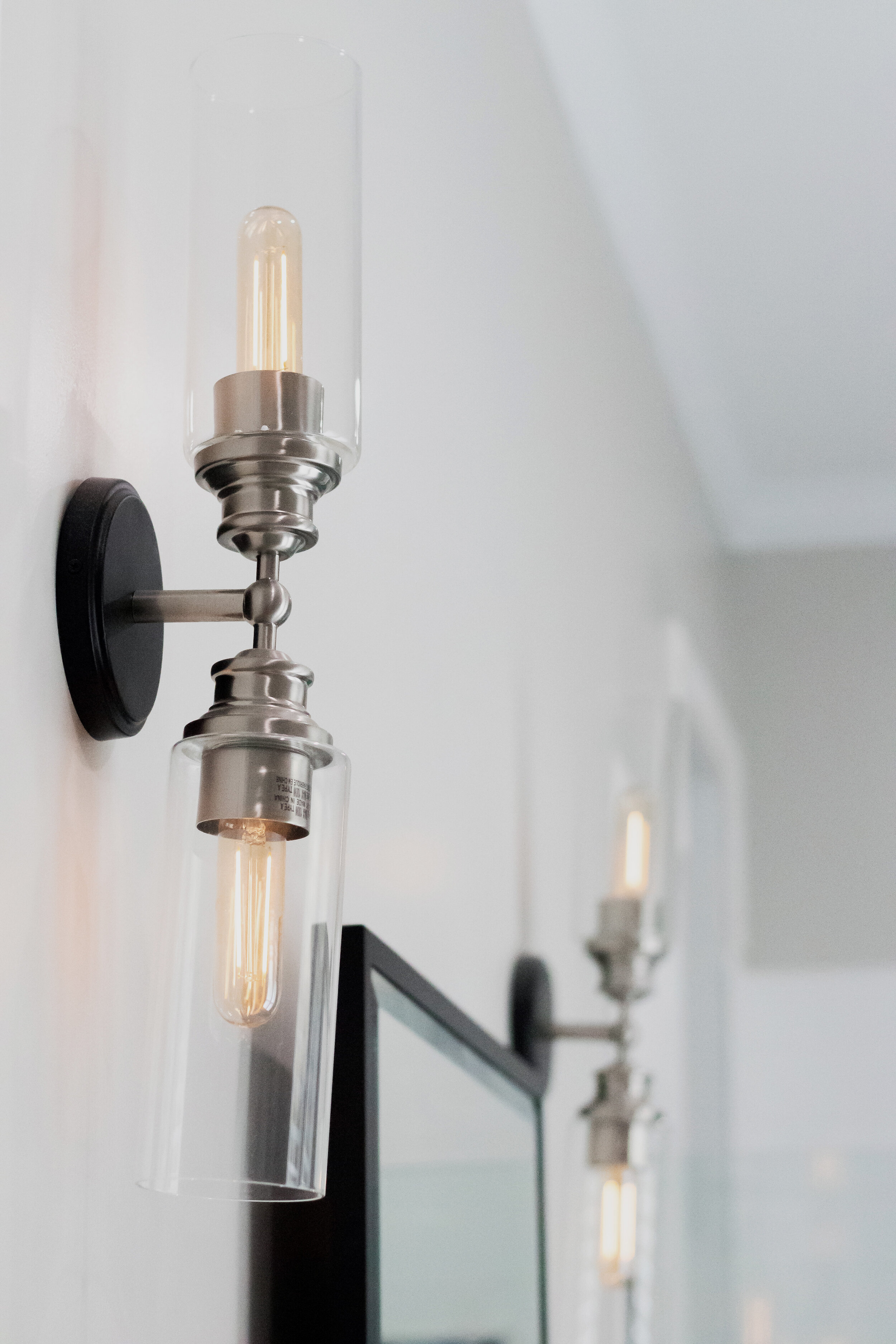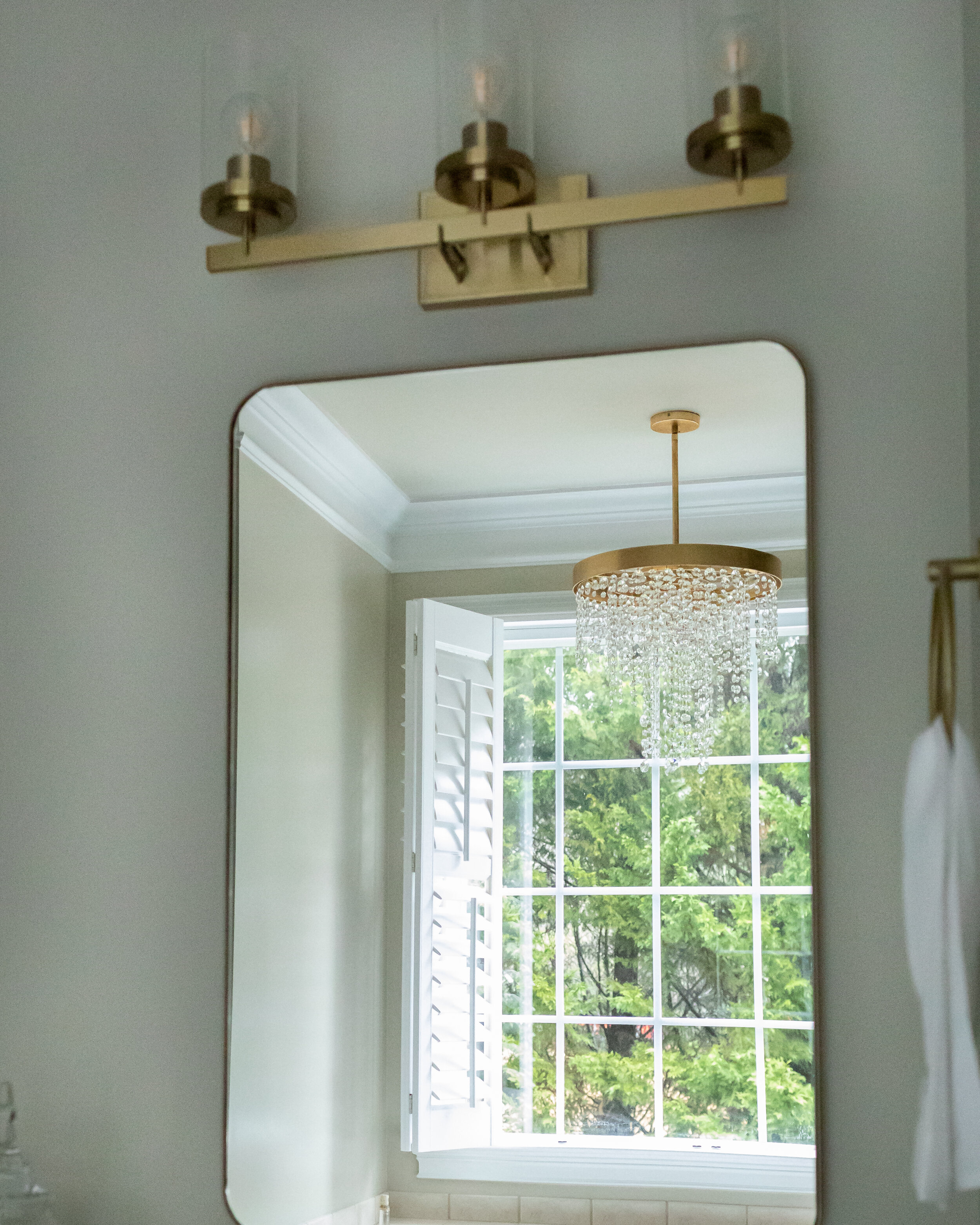The Lighting Rundown
In any space, lighting can make a major statement! It can define an entire space or be the perfect accent that ties different elements together. It can also be very underwhelming if not executed properly. Oftentimes, people either don’t give much thought to the lighting in their homes or they are unsure about the size and scale they should choose. There are so many different styles, shapes, finishes, and materials that sometimes it’s hard to know what will look best. Here are some helpful tips to help empower you in your selections!
Questions to answer:
What speaks to you?
What is your design style?
Once you’ve decided the design style that you love, keep that flow throughout the rest of your home with your lighting. It's absolutely okay to mix two styles together, but the trick is continuity for it to look intentional. If you’ve chosen to use contemporary lighting in your traditional home, keep that vibe everywhere or choose lighting that has a contemporary twist on the traditional version.
Size & Scale
Probably one of the first things that I notice about the lighting in a space is it’s size and scale. The size and scale of a fixture can make or break a room and even an untrained eye can tell when a fixture is wow versus whomp. Because of this, there can be fear surrounding the correct fixture size or that statement piece.
Measure
If you google how to calculate the size of a chandelier, the scale usually tells you to measure the width and length of the room in feet and add them together. The total of that amount in inches would then be the diameter of the chandelier. This calculation provides a good starting point, however, I don’t always agree with this assessment because depending on the type of chandelier you choose, often you can go larger than that calculation. I would consider going a bit larger if you want to make a statement, especially with the more open, airy fixture styles.
KDID Tip: When you are hanging a light fixture over a kitchen or dining room table I wouldn’t go over the width of your table, but you certainly can go near the edge or within 3-6 inches. Just remember, it would be better to be a touch too large in scale than to be too small.
Shape & Weight
Shape and fullness (or “weight”) of the fixture can make a huge difference in a space, and can truly affect how large or small a fixture needs to be. If your light fixture is what I call light and airy then you can go larger because the fixture allows for negative space. A full, busy or weighty fixture can block your view which can make the fixture itself feel larger than it may actually be and has the potential to feel obtrusive if not done thoughtfully.
KDID Tip: If you have an open floor plan but low ceilings, keep in mind how a weighty fixture may create a view obstruction in the room. This is a situation where you may want to err on the airy side of fixture design.
Accent Lighting
Table and floor lamps are functional and pretty (a win win)! They can warm up the space and provide enough ambient lighting so that you have options if you don’t want to have your overhead lighting on. Each day I make sure that I turn on my living room lamps and light a candle to make the room feel inviting. It spreads that soft warm light throughout the space and just makes everything cozy!
Light Bulbs
I’m still an “old school” fan of incandescent lighting, but I must say LED lighting has come a long way. It’s perfect for under cabinet lighting, recessed lighting, sconces and chandeliers. It no longer has to be the blue, glaring light that it used to be and offers an option for a soft white bulb or a small switch for the ability to change the “temperature”.
Dimmer Switches and Smart Bulbs
Dimmer switches are your best friend! I could use them on just about every light. It sets the mood for the home. They can be turned up to help motivate you for tasks to get done, or turned down to a soft glow for a peaceful, relaxing evening. Being able to control how bright a space is can really help you customize the mood. If installing dimmer switches isn’t financially possible or if you’re tech savvy and want to be able to have lighting that turns on and off with your phone or a voice command, you can always research smart bulbs. There are so many options in the market for smart bulbs and smart lighting systems now that you are sure to find a system that meets your needs.
As you can tell, lighting is a very powerful tool in design, because it affects so many things. I encourage you to light up your home. Stretch your thoughts on how to transform your space through lighting. Be bold. Get rid of those old builder grade chandeliers and discover a beautiful new space with something you love!







